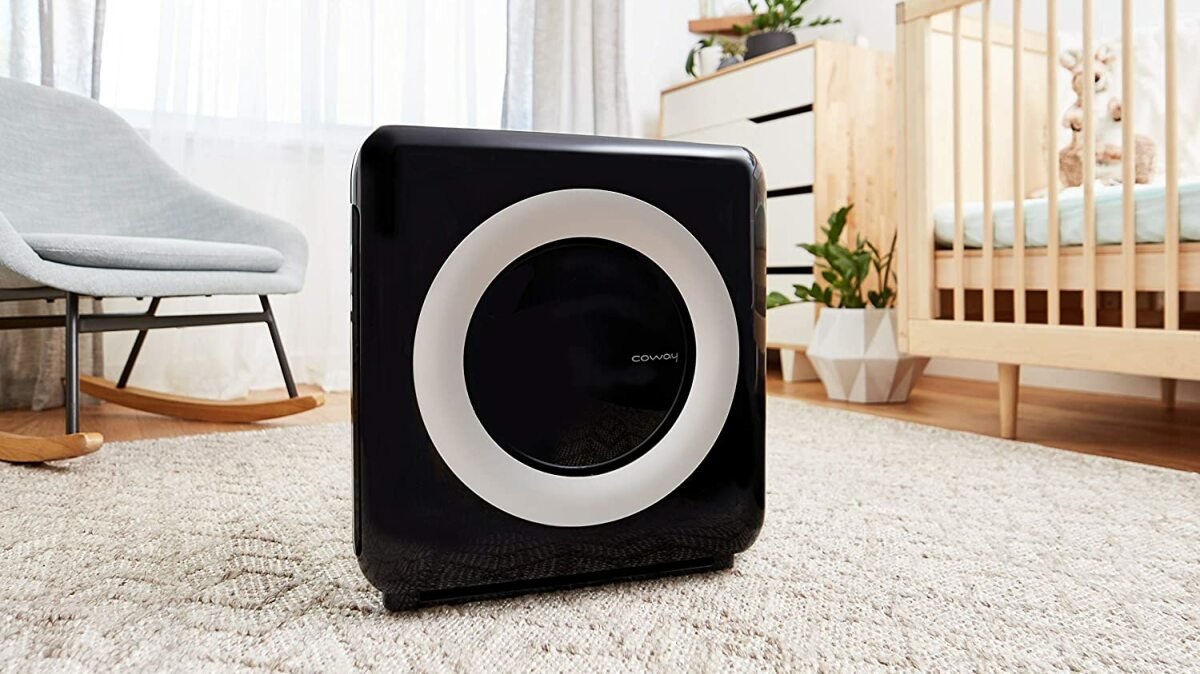9 of the best air purifiers for pet owners


We love our four-legged friends, but one issue that tends to arise that we don’t love? Pet dander in the air — and sometimes a smell or two that is more on the “odor” end of the scent spectrum. For these, and other issues, there are air purifiers: They not only act as filters for your room or house (different air purifiers cover different amounts of airspace, usually measured in square feet) but they can help remove irritants such as dander, dust mites, and other particles of air pollution from the air.
Air purifier talents don’t end with pets. Air purifiers also help to remove germs and environmental pollutants, which is great, but be careful of those germ claims. The EPA says: “When used properly, air purifiers can help reduce airborne contaminants including viruses in a home or confined space. However, by itself, a portable air cleaner is not enough to protect people from COVID-19.” (Emphasis theirs.) And honestly, it makes sense — it seems highly unlikely that an air purifier would be able to trap germs in time to prevent infection.
But air purifier aficionados will tell you that they do really help with reducing all sorts of allergens and with mitigating the impact a city’s air quality has on your indoor living conditions. Air purifiers with HEPA filters can remove particles as small as 0.3 microns, which is much smaller than the usual dander that floats around your home — they’ll even suck pet hair out of the air.
The best place to keep air purifiers in your home is as close as possible to the source of the odor and dander — if you have a dog or cat that spends a lot of time snoozing in their bed, put the air purifier close by there so the dander and allergens are filtered right at the source. The most important thing is to match the air purifier to the size of the room (or area, if it’s a super-open floor plan) so you know that the air purifier is covering an adequate volume of space.
One thing to keep an eye on? The air filters inside the machines. Some machines have removable filters that you just vacuum off, while other machines have filters you simply replace every so often — such as those with odor and/or HEPA filters. While just vacuuming or wiping them off with a cloth is a more eco-friendly option, many pet owners want to start fresh every so often with a just-out-of-the-package filter. And activated carbon filters do help much more with odor. As far as the rest of the maintenance for an air purifier goes, it’s up to the manufacturer’s instructions — which you should be sure to read before your air purifier kicks into high gear.
What do air purifiers do?
Air purifiers are designed to remove particulates from the air, which range from things like pollen to dust, but also includes pet dander and fur. For people who are sensitive to or allergic to some particles in low-quality air like smoke, pet dander, or pollution, an air purifier decreases the appearance of allergic symptoms, and generally makes it a bit easier to breathe.
What makes an air purifier good for pet owners?
For families or living situations where someone has a pet but someone else has an dog or cat allergy, bringing in an air purifiers can help keep the air clean and reduce allergy symptoms like sneezing and headaches.
“Pets release hair, dander, and microbes into the air, some of which may be allergens,” says Linsey Marr, an engineering professor at Virginia Tech with expertise in airborne transmission of viruses, air quality, and nanotechnology. “Adding an air purifier will reduce the amount of these things in the air, potentially benefiting those who might be sensitive to them.”
They can also help eliminate pet odors — so if you have a few pets, the air in the house will be a little fresher. Not every pet air purifier removes dander and fur, though, so be sure to check and make sure the one in your cart does before buying.
What should you look for in an air purifier when it comes to handling pet hair, dander, and odors?
“Pet hair could quickly clog a filter and require more frequent filter changes,” says Marr. “One way to handle this is to choose a unit that has a pre-filter that blocks the larger things, to keep them from reaching the more specialized HEPA filter.” She also adds that air purifiers with a filter type that contains activated carbon will help remove odors. “It’s like charcoal that can absorb smelly gas molecules,” she says.
Marr says that there is likely no practical benefit of add-ons such as UV, plasmawave technology, nanosilver, or other features that are advertised to kill bacteria and viruses, and that the filter physically traps these anyway when they come through.
“They are unlikely to come back off the filter, and they will die off over time anyway,” she says. “If you are concerned about them, when you change the filter, do it gently and wear a mask and gloves.”
What kind of filters should my air purifier come with?
There are a lot of different types of filters used in air purifiers. Some are reusable (often by vacuuming or wiping them down), while others you have to replace every six to eight months or so. Many air purifiers use HEPA filters, which are among the type that catch particulates down to micron-level size, but there’s no reason that’s a must-have. Some air purifiers, including some of this list, have their own proprietary filtration system that removes particulates even a HEPA filter can’t.
What is the clean air delivery rate?
Marr says that when choosing an air purifier for your home, the type of filter is not what’s most important, as even a non-HEPA filter can produce similar, or even greater, benefits if the unit moves more air through it.
“What you should look for is a high clean air delivery rate (CADR),” she says. “This can be achieved with a HEPA filter or a non-HEPA filter, depending on the design of the unit.”
The clean air delivery rate is the cubic feet per minute (CFM) of air that has had all the particles of a given size distribution removed. Basically, it’s how much air an air purifier can clean per minute. As a general rule of thumb, the CADR of your air purifier should be equal to at least two-thirds of the room’s area. For example, a room with dimensions of 10 feet by 10 feet has an area of 100 square feet. In that case, you’d want an air cleaner with a CADR of at least 66.
Finally, look for a model that is recommended by certifying authorities (AHAM or CARB in the US) to ensure you’re getting a quality machine.
If you’re still not sure which air purifier is right for you, we’ve rounded up some of the best air purifiers for pet owners to help you make a smart air purifier choice — check them all out below.



